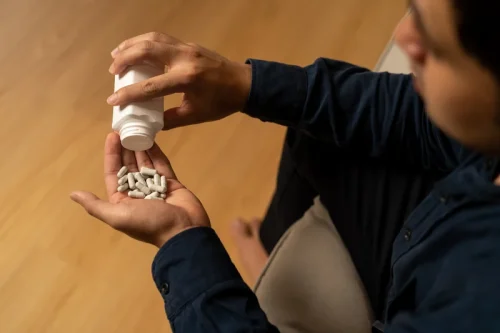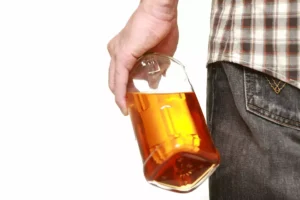Art Therapy for Addiction: Benefits, Techniques, How to Find a Therapist

Art therapy isn’t designed to make you the next Picasso, but it can help you express yourself and learn more about who you are. In fact, one of the most significant advantages of participating in the creation of art is the ability to illustrate your emotions. Meanwhile, trust an electronic health record like TenEleven to manage the day-to-day of your organization’s administrative duties. With TenEleven handling everything from scheduling appointments, managing your revenue cycle, and reporting, you’re able to truly focus on dipping your brush in the paints and maximize patient care. Data were collected using face-to-face interviews with the administrator and/or clinical director of each treatment program.
Art Therapy for Mental Disorders
Once sober, many people find it difficult to fill all the hours they used to spend seeking and using drugs or alcohol. Many people lose touch with their true selves when their primary relationship is with drugs or alcohol. American Addiction Centers (AAC) is committed to delivering original, truthful, accurate, unbiased, and medically current information. The group ends with the opportunity for participants to share what they created and why. For a recent project, participants created greeting cards to represent a non-material gift they would like to give themselves.

Cannabis Addiction Treatment: Effective Strategies for Recovery and Rehabilitation
Art therapy can help people regulate their mood and emotions and find creative ways to express themselves, tools that could help people who are in treatment for substance use disorders (SUDs) avoid using drugs or alcohol again. We identified 75 reports of 69 studies that were eligible for this review3,26-98 (eTable 1 in Supplement 1). Some publications reported the results of 2 studies in 1 article (eg, Gussak et al46), whereas the results of other studies were reported in several publications https://ecosoberhouse.com/ (eg, Öster et al,70-72 Svensk et al,75 and Thyme et al76). When there were multiple reports of the same study, we included all outcome measures that were not duplicates. We included all patient groups and groups receiving targeted preventive art therapy. Reasons for exclusion were induced moods (eg, artificial anxiety induction in healthy intervention groups), studies on healthy college students, or educational classroom settings with no clear preventive or curative target.
Treatment Process

Others around you may have had similar experiences, but no one will have yours. Still, this can be a great opportunity to share your art with others and discuss it together. Others on the path toward recovery are looking to provide support to their peers, and art therapy can be a tool that prevents those from feeling ashamed of their emotions and experiences. Taking your mind off triggers and stressors isn’t always easy, but it can certainly be effective. In fact, a study from 2010 showed that distraction can be an effective means of coping with difficult circumstances. Rather than focus on the thought of relapsing, you can instead turn to your preferred art form.
By providing a non-verbal outlet for expression, fostering self-discovery, and promoting emotional healing, creative activities can play a crucial role in the recovery journey. The therapeutic process of creating art is, in itself, a powerful tool for recovery. It allows individuals to externalize their internal struggles, giving form to abstract emotions and experiences. This externalization can provide a sense of distance and perspective, making it easier to process difficult feelings and experiences. Data for this study were collected between June 2009 and January 2012 from a national sample of SUD treatment organizations.

- To begin, each participant will draw four dots—one in each corner of the paper—and then connect them to draw a square border.
- A trained therapist who specializes in this therapeutic modality is always there to facilitate the artistic experience.
- We identified 356 end point measures of 48 different outcome categories in the studies.
- If you choose to participate with a good attitude and open mind, you’ll get something out of it.
- However, many treatment programs use a combination of self-reporting, behavioral observations, and standardized assessments to track the impact of art therapy on overall recovery outcomes.
Art is just one of the powerful tools you can use to improve your recovery journey and prepare to move forward into a life free from substance use. As children, we’re shown how to color and paint pictures in ways that show off our creativity. Many people stop drawing or creating art as they get older, and unfortunately, we’re no longer encouraged to use creative expression in our daily lives. However, art can be an effective tool in helping those with substance use disorder (SUD) reach and maintain recovery. In conclusion, art therapy offers a unique and powerful approach to addiction recovery.

Naumberg believed that art therapy could promote healing by helping people uncover repressed thoughts and emotions while providing a framework to discuss them. Beginning with her 1947 book, Studies of the “Free” Expression of Behavior Problem Children as a Means of Diagnosis and Therapy, art therapy for addiction she wrote several books on the topic. If you or a loved one are suffering from substance abuse disorder, know that you are not alone. As alone as you may feel, there are many people out there who are dealing with the exact same issues and are finding their path to healing every day.
How Creativity Aids in Addiction Recovery
- For example, let’s say you had a painful experience during your time using substances.
- Creating art releases dopamine, a feel-good chemical that elevates your energy and concentration to new heights.
- Art therapy can help people regulate their mood and emotions and find creative ways to express themselves, tools that could help people who are in treatment for substance use disorders (SUDs) avoid using drugs or alcohol again.
- Art therapy can also teach and develop skills needed to improve mental health such as introspection, self-awareness, and coping methods.
- Therefore, this review aims to explore its clinical applications and future perspectives to summary its global pictures, so as to provide more clinical treatment options and research directions for therapists and researchers.
It can be used during as an evidence-based addiction treatment during detoxification and throughout the recovery process. Art therapy can be a great way to marry the mindfulness practices often taught during SUD treatment with a focus on a healthy outlet for your feelings. For example, if you have the urge to reduce stress by returning to drinking alcohol, this is where art therapy can become involved. At your next opportunity, you could illustrate how you felt when you wanted to drink, as well as any emotions or concerns you had at that moment. One of the most trying aspects of recovery is the stressors and triggers we experience that may have us wanting to return to substance use. Relapsing occurs when people return to using substances, often to numb themselves from these common stressors and often under the false belief that once the stress has passed, they can return to sobriety.
